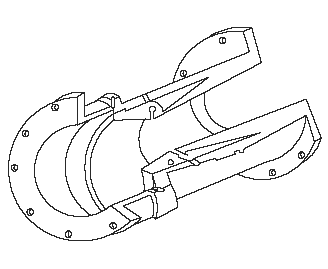Dall Tube Flow Detector Review
Electronics, Instrumentation & Electrical Database
The Dall tube is a shortened version of a Venturi meter, with a lower pressure drop than an orifice plate. As with these flow meters the flow rate in a Dall tube is determined by measuring the pressure drop caused by restriction in the conduit. The pressure differential is typically measured using diaphragm pressure transducers with digital readout. Since these meters have significantly lower permanent pressure losses than orifice meters, Dall tubes are widely used for measuring the flow rate of large pipeworks. Differential pressure produced by a dall tube higher than venturi tube and nozzle, all of them having same throat diameters.
The dall flow tube, illustrated in Figure F1, has a higher ratio of pressure developed to pressure lost than the venturi flow tube. It is more compact and is commonly used in large flow applications.

Figure F1
The tube consists of a short, straight inlet section followed by an abrupt decrease in the inside diameter of the tube. This section, called the inlet shoulder, is followed by the converging inlet cone and a diverging exit cone. The two cones are separated by a slot or gap between the two cones. The low pressure is measured at the slotted throat (area between the two cones). The high pressure is measured at the upstream edge of the inlet shoulder.
The dall flow tube is available in medium to very large sizes. In the large sizes, the cost is normally less than that of a venturi flow tube. This type of flow tube has a pressure loss of about 5%. Flow rate and pressure drop are related as shown in Equation E1.
![]() E-1
E-1
